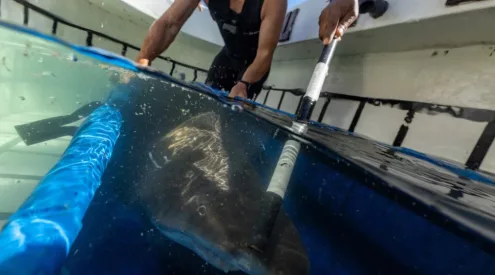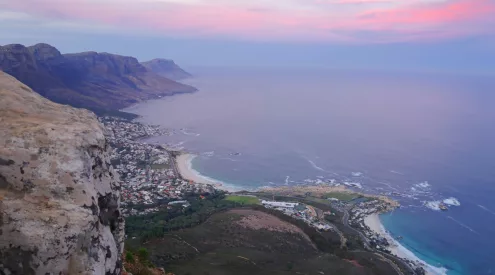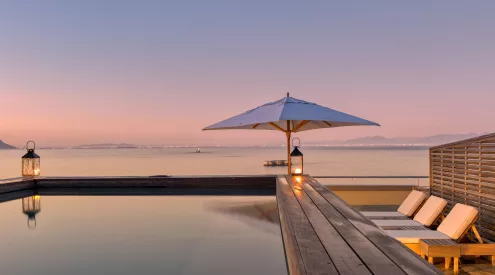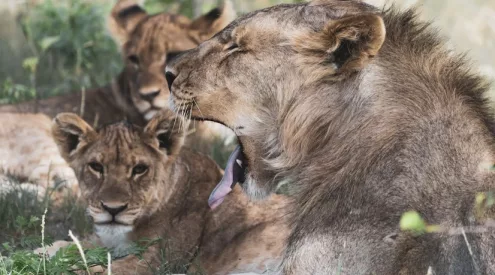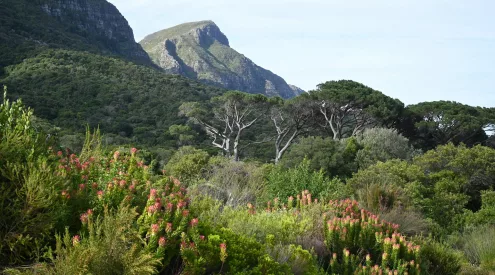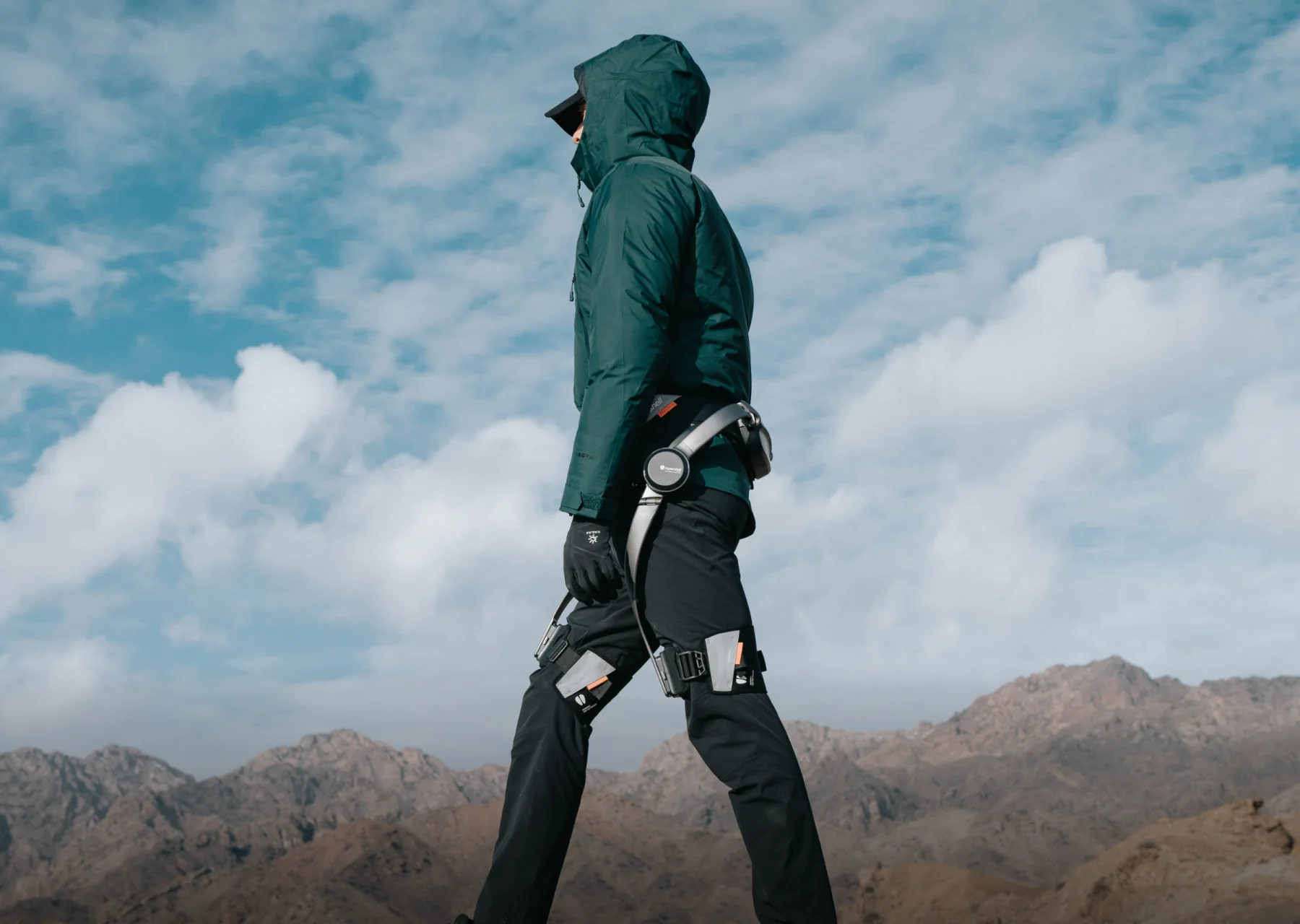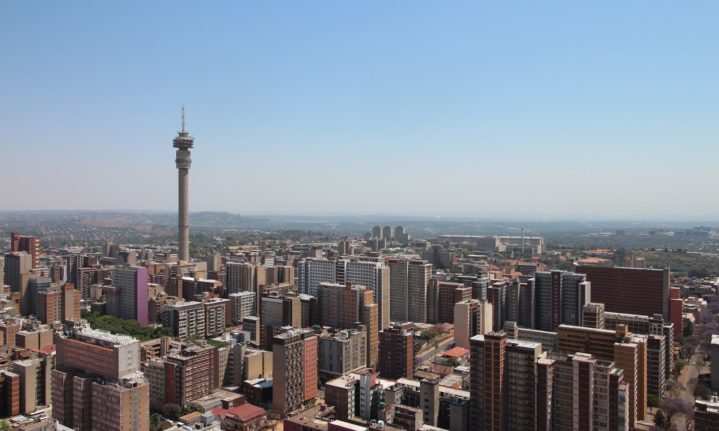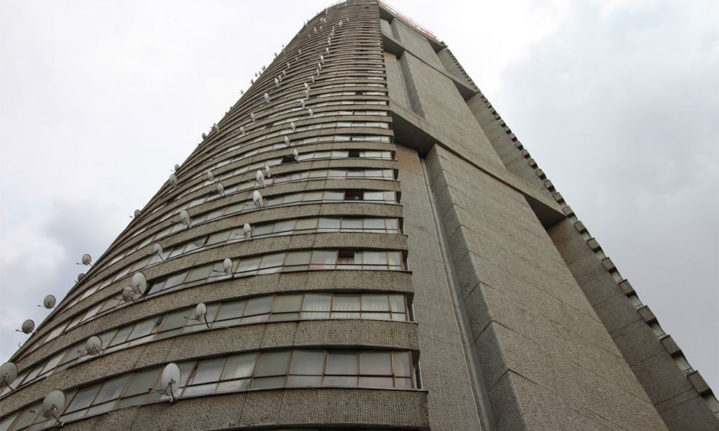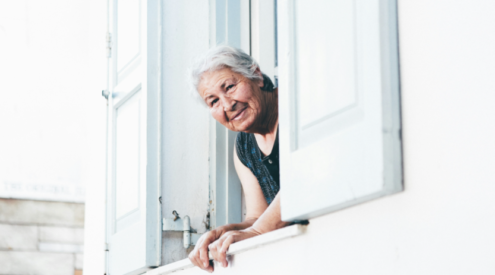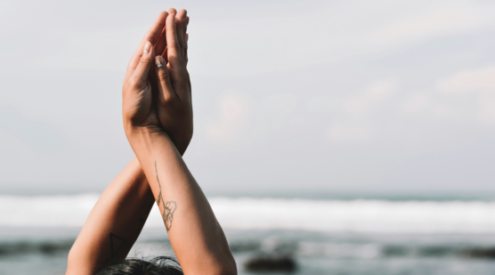Ponte Tower. An iconic landmark that towers over Johannesburg’s concrete jungle. A place eschewed by many locals, dismissed as dangerous and dirty.
But is it really?
A guided tour by Dlala Nje of the neighbourhoods of Berea and Hillbrow led by local NGO Dlala Nje challenges all preconceived ideas of the areas, including my own. Dlala Nje, the name of which translates to ‘Just Play’, creates opportunities for children in the area and the tours help fund its work.
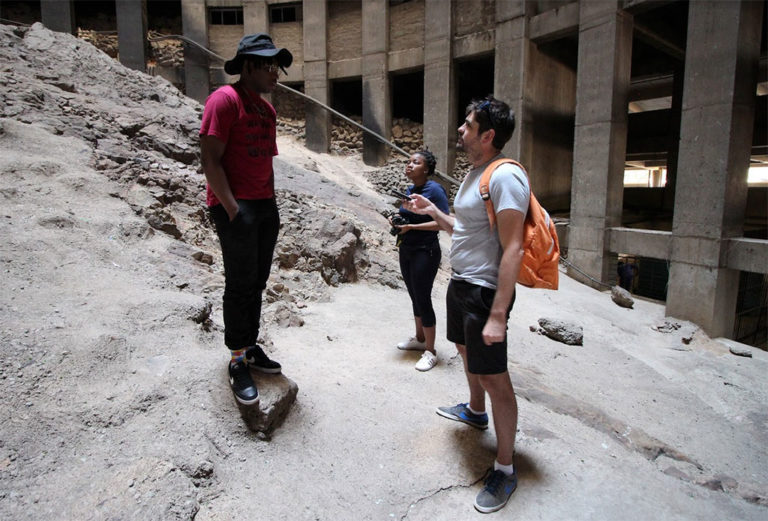
Guide Grant Ngobo chats to individuals on the tour.
While Hillbrow was a well-respected neighbourhood in the 1970s, in the 1990s many of its residents moved to the suburbs and the area became crime-ridden. Ponte Tower, a 54-floor tall, circular block of flats, fell prey to gangsters. In 2002, the tower was known as a ‘vertical slum’. Garbage and rubble stood 14-floors high. Around 10,000 people squatted in 484 of the apartments. However, around the time of the 2010 World Cup, attempts were made to clean up the structure and by 2012, Ponte had been revamped.
‘We want to give people a chance to explore and come up with their own perceptions,’ tour guide Grant Ngcobo tells my group. Currently, the Hillbrow tour is rated fourth on Trip Advisor in Johannesburg.
We begin with a visit to the interior of Ponte, and go up to the 51st floor where we take in spectacular views of the city. On a clear day, it’s possible to see landmarks like the Dome events venue, Midrand’s Mall of Africa and even the Unisa campus in Pretoria.

View from the 51st floor of Ponte Tower.
Then there’s the architectural marvel that is the tower’s hollow inner core, an open-air rotunda where sunlight filters through, making light play on the windows. I took the obligatory Ponte selfie (at an unfortunate angle that results in an unavoidable double-chin).
After being satisfied that we’d taken enough photographs in the tower, we moved on to the rest of the tour. Grant points out various buildings as we walk, some with historical architectural value, others remnants of a slightly hedonistic past. One such building is the Telkom Jo’burg Tower, also known as the Hillbrow Tower, which at 269 metres is the tallest structure in South Africa. Built in 1971, the top of the tower was once a revolving restaurant and nightclub.
We stop to buy tasty boiled peanuts from a street vendor. At R2 a bag it’s a steal. We enter a park that used to be riddled with needles discarded by drug addicts. Now, people relax on benches and children can play safely. Many streets in the neighbourhoods have CCTV cameras, keeping crime in check.
Beautiful jacaranda trees line the pavements, street art livens up grey walls, and fresh fruit and vegetables can be found at the sidewalk market on Pretoria High Street.
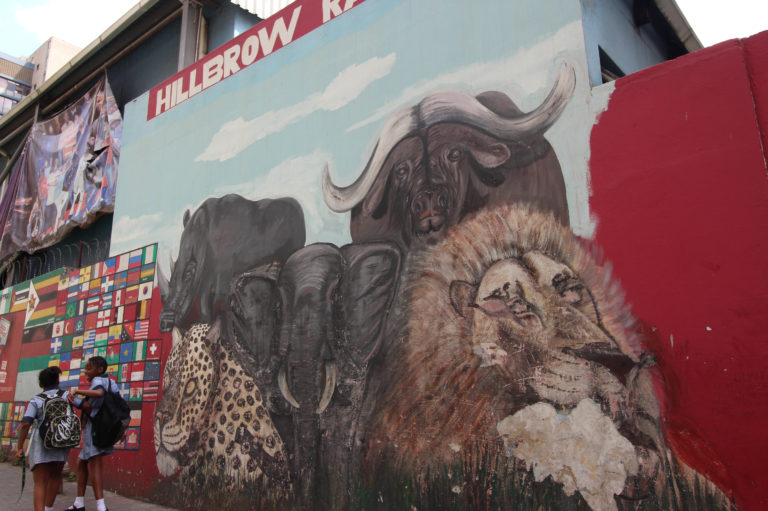
Colourful murals liven up the street.
The tour ends in the best way possible: with a traditional meal at a local shebeen. Crispy chicken, stew, coleslaw, spicy tomato relish, marogo (wild spinach), and of course pap are all eaten by hand. I opted for an enormous, crisp beer – a Black Label – as my complimentary drink.
Wandering the streets, you can feel this is a city that is alive, a city that breathes and evolves, a city that speaks and listens, ebbs and flows, and clutches at the heart.
Do it: To book a tour, visit www.dlalanje.org. The cost is R350 per person and includes a meal and one drink. Although the tour takes three hours, the walk is only three kilometres long, but wear sturdy shoes anyway. A hat is recommended.
Words and images: Andrea van Wyk

